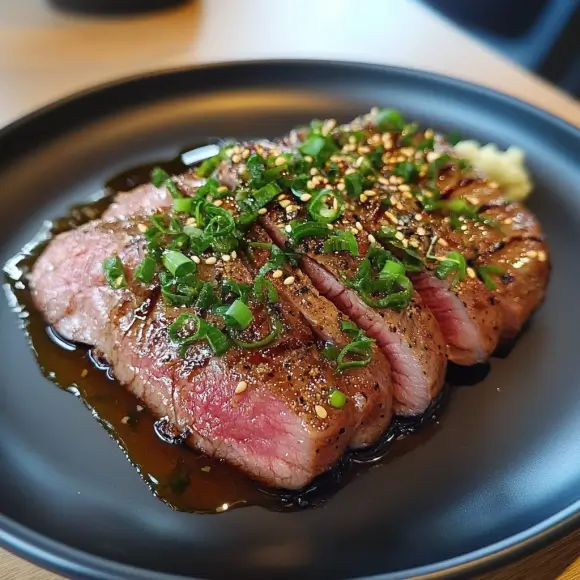Table of Contents
Understanding Silverside Beef
What Is Silverside Beef? Silverside beef, a lean cut from the cow’s hindquarter, is known for its versatility and firm texture. While it lacks the fat of other cuts, it has unique qualities. Its outer layer, covered with a silvery skin, gives it its name and adds character. This cut is ideal for slow-cooked dishes like pot roasts and stews. However, it needs proper preparation to become tender. Cooking methods like braising or roasting with added moisture work best to make it soft and flavorful, making it a great choice for hearty meals
History of Silverside Beef

Silverside beef comes from Europe, where people preserved meat by salting and brining. This made it popular in homes, especially in Britain and Ireland. Over time, it became a favorite because it was affordable and tasty. For example, corned beef, made from silverside, is still popular today. As cooking methods improved, silverside was used in new ways, keeping it an important part of many cuisines. Its journey from preserved meat to a well-loved dish shows how adaptable it is.
Silverside and corned beef are still closely linked, as seen in discussions about whether they are the same. Over the years, silverside has adapted to modern cooking methods, making it a trusted choice in kitchens worldwide.
Nutritional Value of Silverside Beef
When considering silverside beef, its nutritional value is another reason for its popularity. For one thing, it is a rich source of high-quality protein, which is crucial for muscle repair and growth. Furthermore, it contains significant amounts of iron, which helps improve energy levels and combat fatigue. Not only that, but it also provides zinc, essential for a robust immune system, and B vitamins, particularly B12, which supports energy metabolism. Given its nutrient density and relatively low-fat content, silverside is an excellent choice for those looking to maintain a balanced diet.
For individuals aiming to balance their diet with low-fat options, understanding what silverside beef is best for can be a game-changer.
Health Benefits of Eating Silverside Beef
Adding silverside beef to your meals offers several health benefits. It is rich in protein, which supports muscle growth, repair, and overall tissue health. It also provides iron, which helps boost energy levels and supports brain function, particularly for people with anemia.
For those looking to cut back on saturated fats, silverside is a better option than fattier cuts of beef. It fits well into a healthy diet, especially when paired with nutritious vegetables. Knowing how to cook silverside beef allows you to make meals that are both flavorful and good for your health.
If you’re curious to explore more, understanding what silverside is called in the USA can help you incorporate it into recipes from different cultures, making it easier to enjoy this adaptable cut of beef across the globe.
Culinary Uses of Silverside Beef
Silverside beef offers many cooking options. Its dense texture makes it perfect for slow cooking, which improves its flavor and tenderness. Popular uses include pot roasts, casseroles, and corned beef. Silverside also works well in soups and stews that need long cooking times. It absorbs flavors easily, making it a great choice for marinades and spice rubs. Its versatility in the kitchen has made silverside a favorite for both professional chefs and home cooks.
Pairing Silverside Beef with Other Ingredients
To bring out the best flavors of silverside beef, it’s important to pair it with the right ingredients. Herbs like rosemary, thyme, and bay leaves enhance its rich taste. Root vegetables such as carrots, potatoes, and parsnips are great choices as they soak up the beef’s savory juices. Grains like barley or wild rice add texture and make the dish more filling. For a special touch, pair silverside with a bold red wine like Shiraz or Merlot to highlight its strong flavor. Choosing these ingredients helps you create meals that are both delicious and satisfying.
Choosing the Best Silverside Beef
Selecting high-quality silverside beef is critical to achieving the best results in your cooking. Therefore, when shopping, look for meat that is bright red in color, as this indicates freshness. In addition, the cut should feel firm to the touch and have minimal marbling, ensuring a lean yet flavorful piece of beef. Furthermore, buying from trusted butchers or local farmers can provide additional assurance of quality. However, if purchasing from a supermarket, always check for proper packaging and storage. By taking these steps, you can guarantee that the silverside beef you choose will Refine the flavor and texture of your dishes.
Silverside Beef Around the World
Silverside beef originated in Europe but is now enjoyed worldwide in many cuisines. In Ireland, it stars in the classic dish corned beef and cabbage, often served on St. Patrick’s Day. Across the UK, people favor roast silverside for Sunday dinners, typically pairing it with Yorkshire pudding and gravy. Brazilians, who call it “Coxão Duro,” often use it in stews and soups. Australians enjoy it as a cold cut or the centerpiece of festive meals. Its versatility in different cooking styles highlights its global popularity.
Silverside Beef for Festive Occasions
Silverside beef is a perfect choice for special occasions. It is large and retains its flavor during slow roasting or braising, making it ideal for holiday gatherings.
For example, at Christmas or family celebrations, beef stands out when paired with spiced glazes or wine reductions. Its lean nature allows it to take on bold flavors without overwhelming the dish. Whether served with traditional sides or more modern dishes, it can enhance any festive meal.
Why choose silverside for special occasions?
- It is affordable and easily feeds a crowd.
- It pairs well with celebratory flavors like cloves, cinnamon, and red wine.
- It holds its shape and texture when cooked low and slow.
By adding beef to your festive menu, you can serve a dish that will satisfy your guests and impress them.
Common Myths About Silverside Beef
Despite its popularity, several misconceptions surround silverside beef, which often discourage cooks from exploring its full potential. However, it’s important to debunk these myths to truly appreciate what beef has to offer.
Myth 1: Silverside Is Always Tough
Because silverside beef is a lean cut, it can indeed become tough if cooked improperly. However, by using techniques such as slow cooking, braising, or marinating, this cut can easily be transformed into a tender and succulent dish.
Myth 2: It’s Only for Boiling
While corned beef is a well-known preparation method for silverside, it is far from the only option. In fact, this cut is equally excellent for roasting, stewing, and even stir-frying when sliced thinly.
Myth 3: Silverside Needs Heavy Marinades
Although marinades can undoubtedly Refine its flavor, silverside’s natural taste can shine through with simple seasonings like salt, pepper, and garlic.
By understanding these facts and dispelling these myths, it becomes evident that silverside beef is far more versatile and rewarding than many people assume.
Environmental Impact of Silverside Beef Production
The environmental impact of beef production mainly depends on farming methods. Sustainable and ethical sourcing plays an important role in reducing the environmental footprint of this lean cut.
For example, farmers use practices such as:
- Rotational grazing, which improves soil health and boosts biodiversity.
- Feed additives that reduce methane, helping lower greenhouse gas emissions.
- Smart water management, ensuring long-term resource use.
Silverside Beef in the Food Industry
Silverside beef is popular for its flavor and versatility, making it a common choice in delis, restaurants, and meal services where it can deliver tasty results in large quantities.
Common Uses:
- Pre-cooked corned beef for deli sandwiches
- Slow-roasted silverside in buffets
- Packaged meals for retail markets
Thanks to its lean nature and flexibility, commercial kitchens often choose silverside beef for its cost-effectiveness and quality.
Cooking Silverside Beef for Beginners
For those new to cooking, silverside beef may seem a bit tricky at first. However, it’s easy to prepare with the right methods. This cut is perfect for slow-cooked recipes, which take little effort but give you tender, flavorful results.
Tips for First-Time Cooks:
- Stick to Slow Cooking: Roasting or braising at low heat makes silverside tender and brings out its flavors.
- Monitor Temperature: A meat thermometer helps you cook it perfectly and prevents overcooking.
- Let It Rest: Resting the meat after cooking lets the juices spread, keeping each slice moist and tasty.
- Try Simple Flavors: Start with basic seasonings like rosemary, thyme, and garlic before trying more complex marinades.
In short, silverside beef is a great choice for beginners and offers delicious results.
FAQs:
Is silverside a good cut of beef?
Yes, silverside is an excellent cut of beef, especially for those looking for lean, flavorful, and versatile options. Butchers take it from the cow’s hindquarter, so it has less fat compared to cuts like ribeye or brisket. Many cooks like to use silverside for slow-cooking methods like braising or roasting, which improve its texture and enhance its flavor. This cut also offers great value for its size and versatility, making it a top choice for recipes that need strong flavors and tender results.
Is silverside tough or tender?
Silverside is a tougher cut of beef because it is lean and comes from a muscle that gets a lot of use. However, it can become very tender when cooked the right way. Slow-cooking methods like braising, roasting, or simmering help soften the connective tissues, making the meat tender. Slicing the meat against the grain after cooking also helps make it more tender. While it needs more care than tender cuts, the result is worth the effort.
What is silverside beef in the USA?
In the USA, silverside beef is often called the bottom round or outside round. It comes from the round primal cut on the cow’s hindquarters. While “silverside” is used in countries like the UK, Australia, and New Zealand, American butchers and recipes usually refer to it as part of the round. Its lean texture makes it popular for dishes like pot roasts, corned beef, and other slow-cooked meals. The name may differ by region, but the cut is the same.
Can you cook silverside like steak?
Silverside is not good for cooking like steak because it is lean and tough. It doesn’t have the fat needed for quick, high-heat methods like grilling or pan-searing. Cooking it like a steak can make the meat chewy and less enjoyable. Instead, slow-cooking methods work best to make it tender. However, if properly marinated and thinly sliced against the grain, silverside can be used for stir-fry or fajita-style dishes that require quick cooking.
Conclusion
This cut of beef is versatile, affordable, and flavorful, making it a great choice for turning simple meals into special ones. Its flexibility means it works well for festive gatherings, slow-cooked comfort foods, or even pre-packaged options in the food industry.
By learning the right ways to prepare this lean cut, you can ensure it is always tender and tasty. Mastering basic cooking techniques and trying out creative recipes lets you bring out its full potential in your kitchen.
In summary, making high-quality meals doesn’t require expensive ingredients. With the right approach and a bit of creativity, silverside offers endless options for creating memorable and delicious dishes.


2 thoughts on “What Is Silverside Beef Best For? A Guide to Its Uses and Benefits”